The McLaren 600LT Spider Makes No Sense, But It’s The One I’d Have
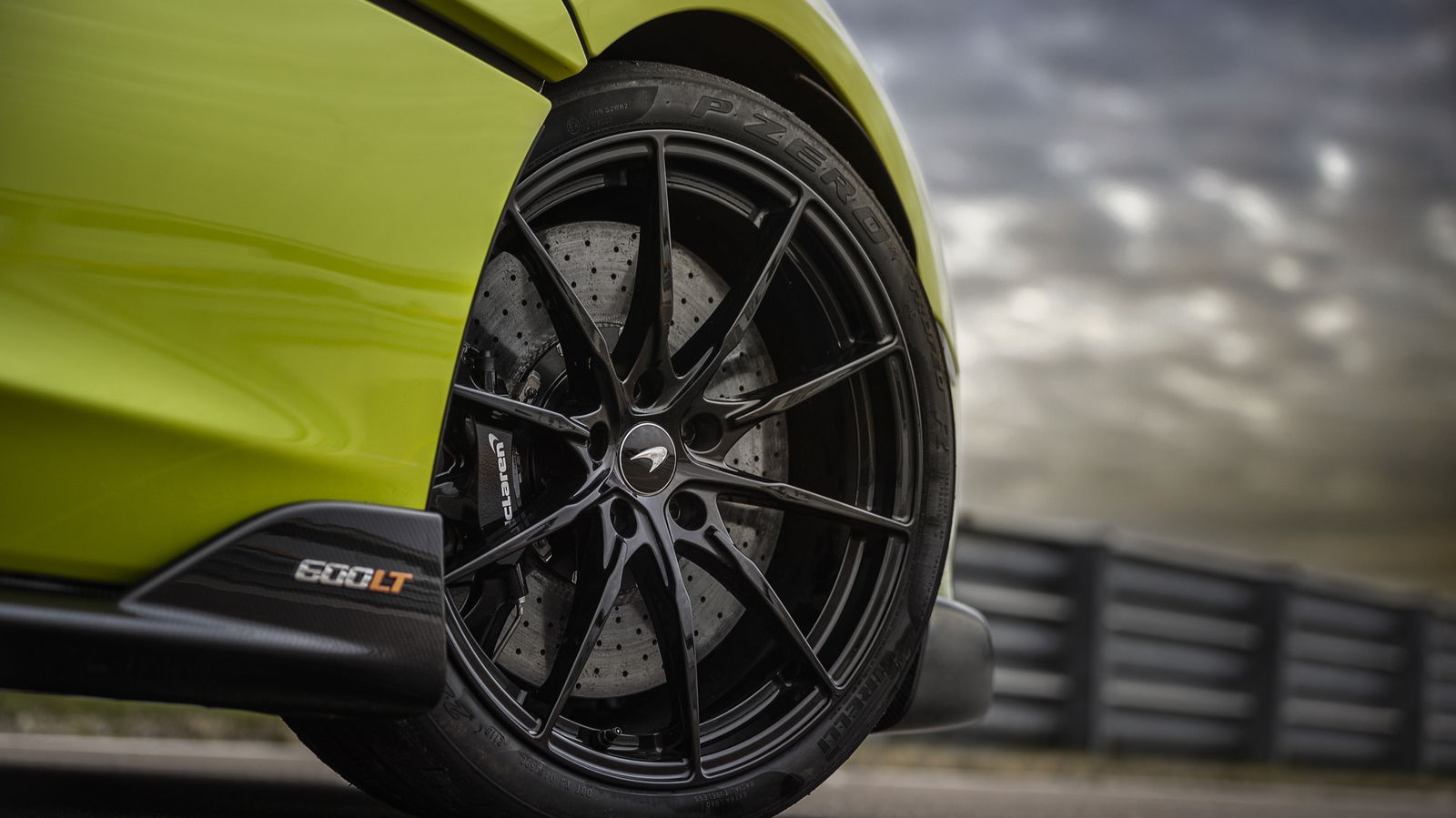
Welcome, ladies and gentleman, to the car world’s most ridiculous contradiction: a track-biased, convertible supercar. Drop-top supercars of the regular sort - if it’s even possible to describe such a machine thusly - are silly enough: why go to all that effort making a car which is first and foremost about going very quickly in a straight line and around corners, only to compromise it by hacking the roof off?
This stupidity is merely amplified for the most focused of supercars, and yet we live in a world where it’s possible to buy a Lamborghini Huracan Performante Spyder or a Ferrari 488 Pista Spider. Even Porsche is getting in on the act with the limited-run 911 Speedster, which is best thought of as a GT3 RS Cabriolet with shiny retro addendum and a new name.
And now there’s a new one. It’s the McLaren 600LT Spider, and on first glance, it’s as nonsensical as all the other cars I mentioned in the last paragraph. And yet it’s the version of the 600LT I’d have.
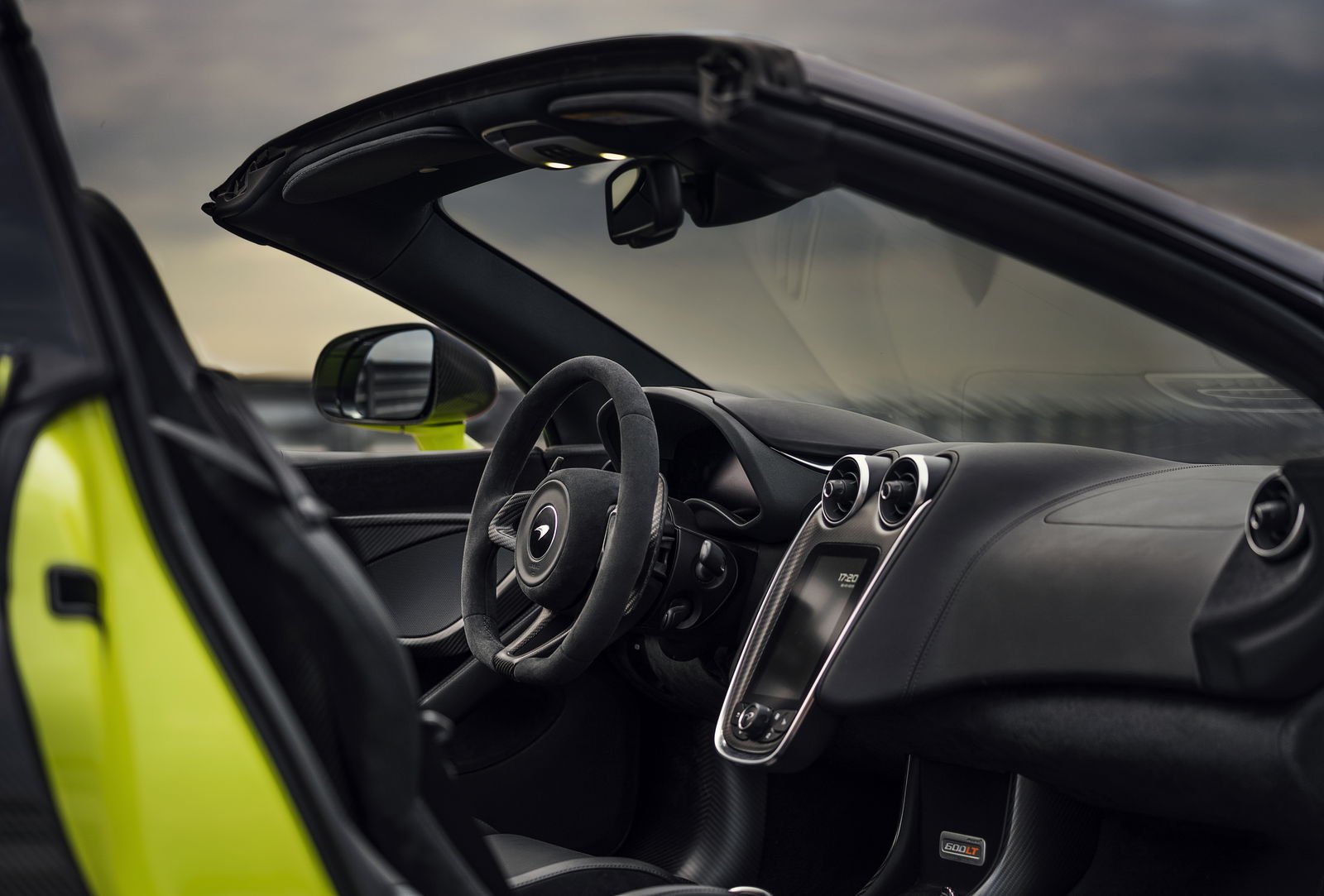
There is a strong and very geeky technical argument for this apparently barmy stance, and you can see part of it when you lift one of the dihedral doors. At this point, you might get distracted by the fact the party-piece door arrangement is still present, but if you remain focused and look down, it’s there: the fat sill of the Monocell II carbon fibre tub.
As with all cars produced by McLaren Automotive since its inception, these structures allow you to take away the roof with no penalty in terms of rigidity. That then means you don’t need to offset any added floppiness with heavy under-body stiffening, so the 600LT Spider’s weight gain is modest, and all slap bang in the middle of the car. It’s 50kg, almost all of which is related to the new folding roof mechanism. No, you can’t feel it.

What you can feel is the added sense of entertainment. The joy of simply being outside. The pleasure of gunning it through a tunnel or underpass and hearing the mechanical violence of that 592bhp twin-turbo V8 exploding off the concrete.
Getting from A to B suddenly becomes much more interesting, even if the bit between doesn’t involve a particularly interesting road. And if the ‘B’ happens to be - like it is today - a race track, then you’re in for one of the drives of your life.

Said track is Arizona Motorsports Park, and I got a sense when leaving the hotel this morning that the LT Spider was set to impress on track. I have driven the coupe version before, but the first 20 or so metres reminded me of the sense of ‘rightness’ the car gives off at any speed. The minimalistic cabin appears to shrink around you as soon as you start moving, the heavy, feedback-laden hydraulic steering and firm chassis immediately making themselves known. Roof up or down, the focus is undeniable.
That’s not to say it isn’t unusable on the road. In fact, the way the damping deals with harsher surfaces is remarkable, considering the stiffness and the more conventional suspension setup used by the Sports Series cars. Unlike the Super Series (that’s the 720S, 720S Spider and eventually a 675LT successor), you don’t get a fancy hydraulically-linked set of dampers. It’s not hampered by this in terms of comfort, and it feels more natural - clever though the 720S system is, it does introduce a weird, almost floaty feeling to the car.

The one thing I didn’t get the chance to do with the 600LT coupe was to drive it on the road, so it’s nice to tick that box in the Spider and know both cars will work just fine in the real world. But it’s far nicer to switch to the LT’s angrier modes and head out for some hot laps and experience the car in its element.
As the speed builds, my ongoing lust for a 911 GT3 RS or Mercedes-AMG GT R wanes. The fast changes of direction it handles with ease, the traction from those 285-width Pirelli Trofeo Rs at the back, the body control - it’s all top drawer stuff. The linear, predictable, involving steering is, as it is on every McLaren I’ve driven, a highlight - I’m not sure if electric power steering will ever be as good as this. Woking certainly doesn’t think its possible right now, so the hydraulic setup remains.

The 600LT somehow manages to be approachable while also making it abundantly clear that it isn’t a car to be trifled with. With the chassis and powertrain both set to Track and the ESP Sport mode providing something along the lines of a final safety net, it will still bite if you take liberties. It demands attention and respect. I’m happy to oblige on both fronts.
So far, so familiar - other than the added entertainment of being able to drop the roof, this is shaping up very much like the coupe. Inevitably, though, the 600LT Spider comes with the same less-so good bits too.
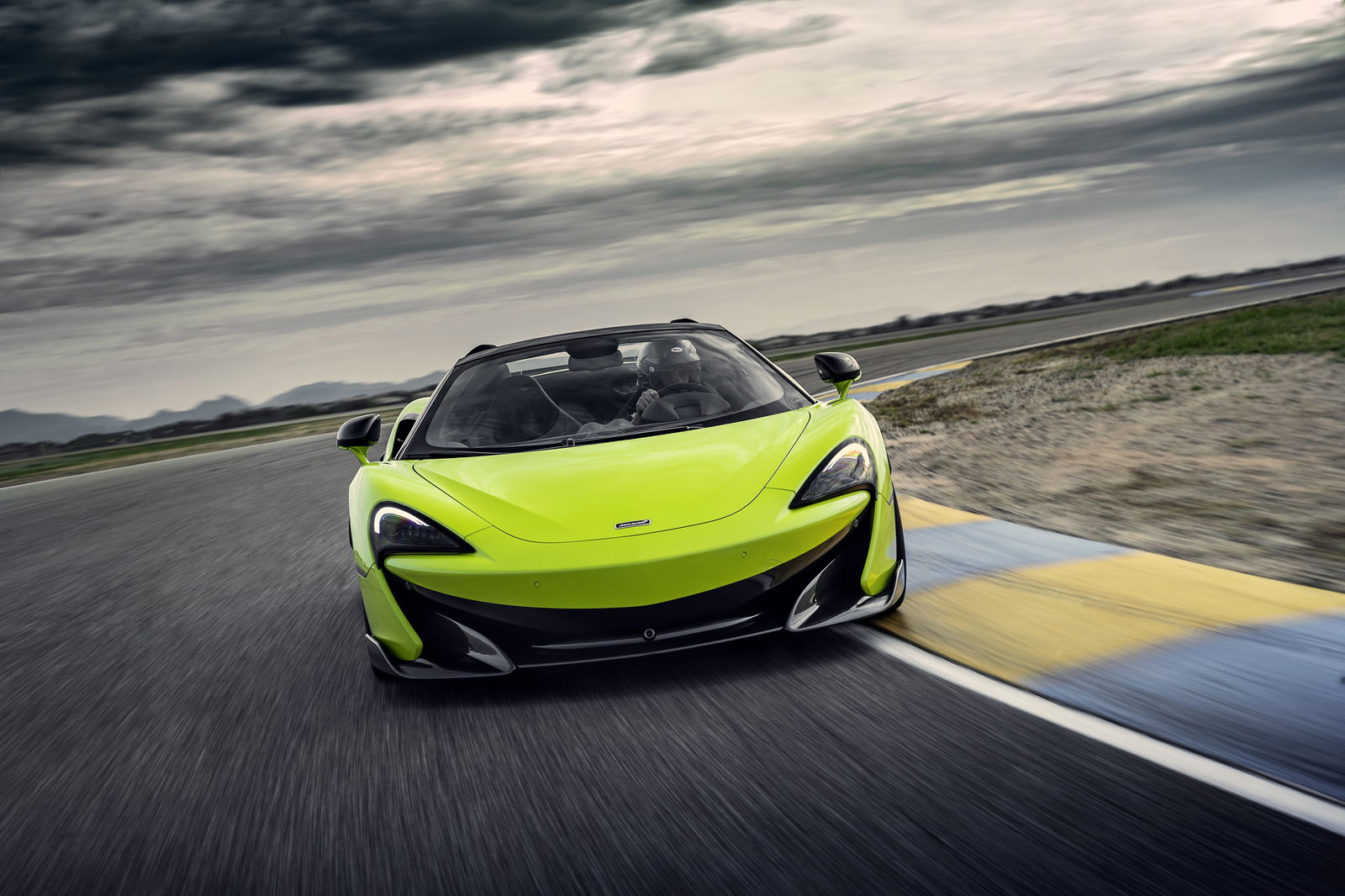
One potential stumbling block threatening to bar the LT - in either body style - from having a place as the track car in my dream garage is the 3.8-litre twin-turbo V8. Without a tunnel in which to reverberate, the sound spat out by those brilliant blue flame-spitting top-exit exhausts lacks character. Oh, there’s plenty of noise, but that’s just what it is - noise.
That’s not ideal when you have alternatives like the Huracan Performante and the aforementioned 911 GT3 RS, between them rocking a good percentage of the world’s remaining high-power N/A engines. Even the 4.0-litre twin-turbo V8 in the Mercedes-AMG GT R makes a stronger impression when it comes to the sound and personality departments.
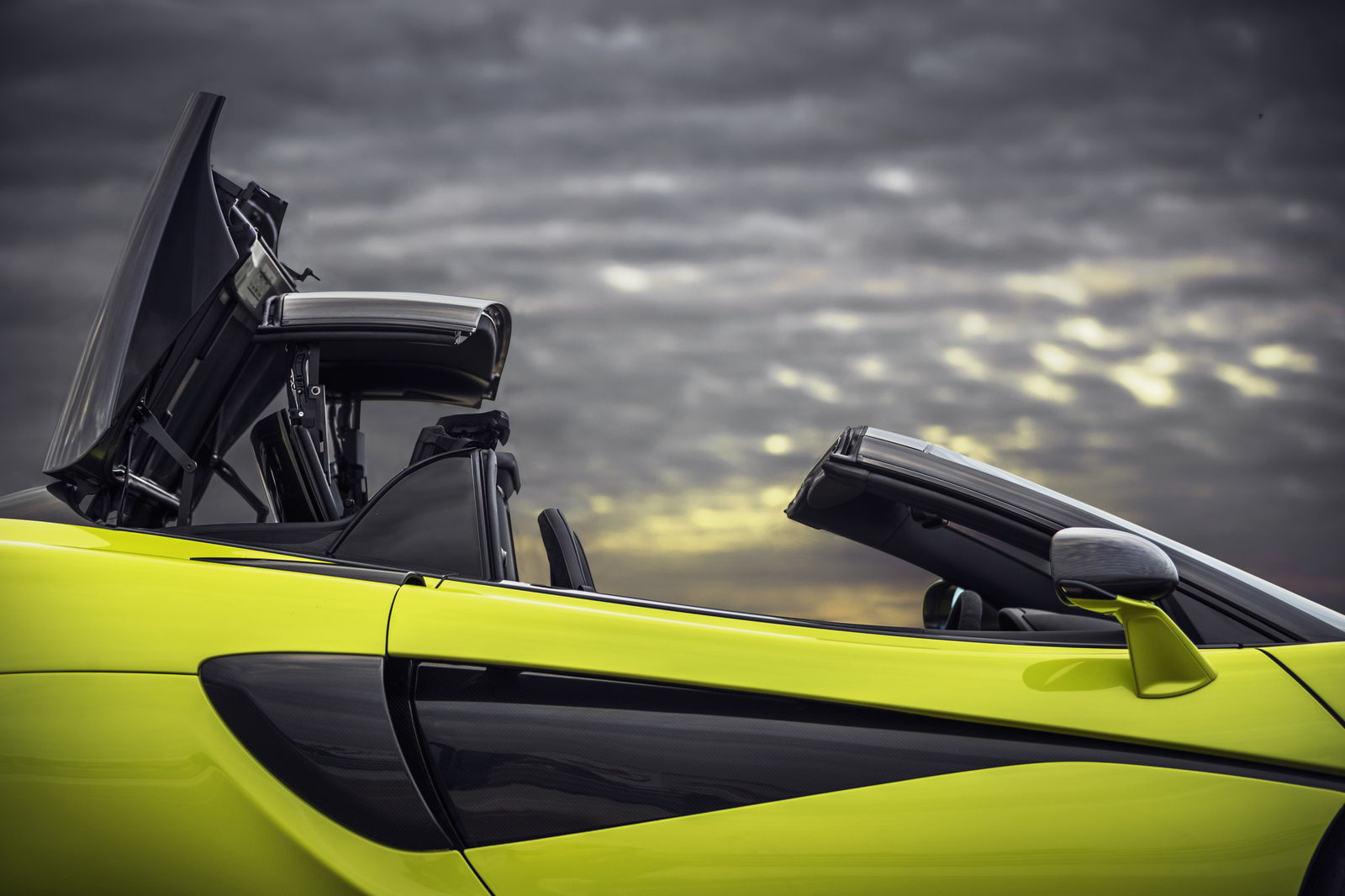
That said, there’s no arguing with its effectiveness. Turbo lag is present but reasonably contained, the boosty mid-range delivery found in the 570S (there aren’t many mechanical differences between the engine in each car) smoothed out, and - my favourite bit - there’s a satisfyingly linear sweep up from 4000rpm up to the 8000rpm red line. It comes far closer to giving you the best of best worlds than most other turbocharged engines with this kind of power, and it’s well matched to an enormously effective and at times quite brutal seven-speed dual-clutch gearbox.
The 3.8 also happens to make the 600LT enormously fast. 0-62mph hasn’t changed at all, with the LT Spider cracking the benchmark in only 2.9 seconds - no different to the tin-top. 0-124mph happens in 8.4 seconds, a 0.1sec drop that I should imagine owners will be able to live with.
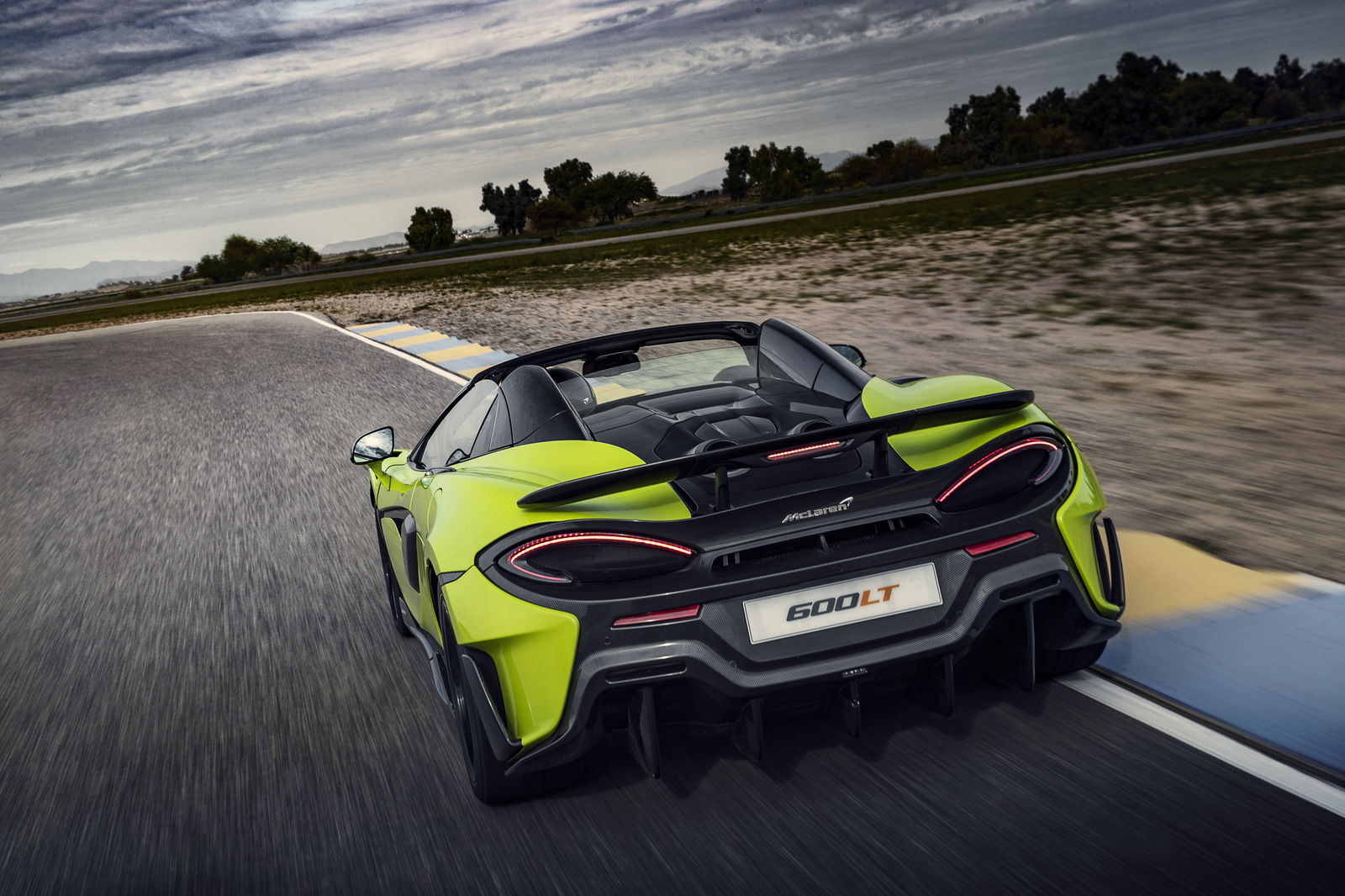
Arguably more impressive, however, is the way it stops - having reached 124mph in about the time it takes to say ‘McLaren 600LT Spider’ twice, if you then bury that left-hand pedal with all your might, you’ll come to a stop about a car length later than a P1 would. It will actually take some physical effort, too - that brake pedal is conspicuously meaty. I like that.
Cool down lap completed, I peel off into the Arizona Motorsport Park’s simple, pared-back pit lane. A good place to stand and admire the way the 600LT Spider looks for just a moment, I think.
Visually, it’s grown on me hugely since first being revealed as a coupe. I wasn’t bowled over initially, finding it to look fussy in comparison to the clean yet intense 675LT. But as time’s gone on, I’ve learned to appreciate the details: the low, protruding nose, the trio of aggressive side blades, and best of all, the giant rear diffuser blades that look like the teeth of a nightmarish robot.

It oozes purpose without betraying the simple but effective lines of the 570S, and yes, it looks wicked with the roof stowed.
The McLaren 600LT Spider ticks all these boxes with seemingly no drawbacks over the coupe, save for rear visibility being hampered slightly by the high rear deck (it’s noticeably taller than the 720S, which has a neater single-piece roof), and the inevitable price hike (£16,000) over the hard-top.
Saying it’s the best version of the 600LT doesn’t feel enough of a compliment. On the strength of everything I’ve seen today, it might just be the best thing McLaren makes right now.
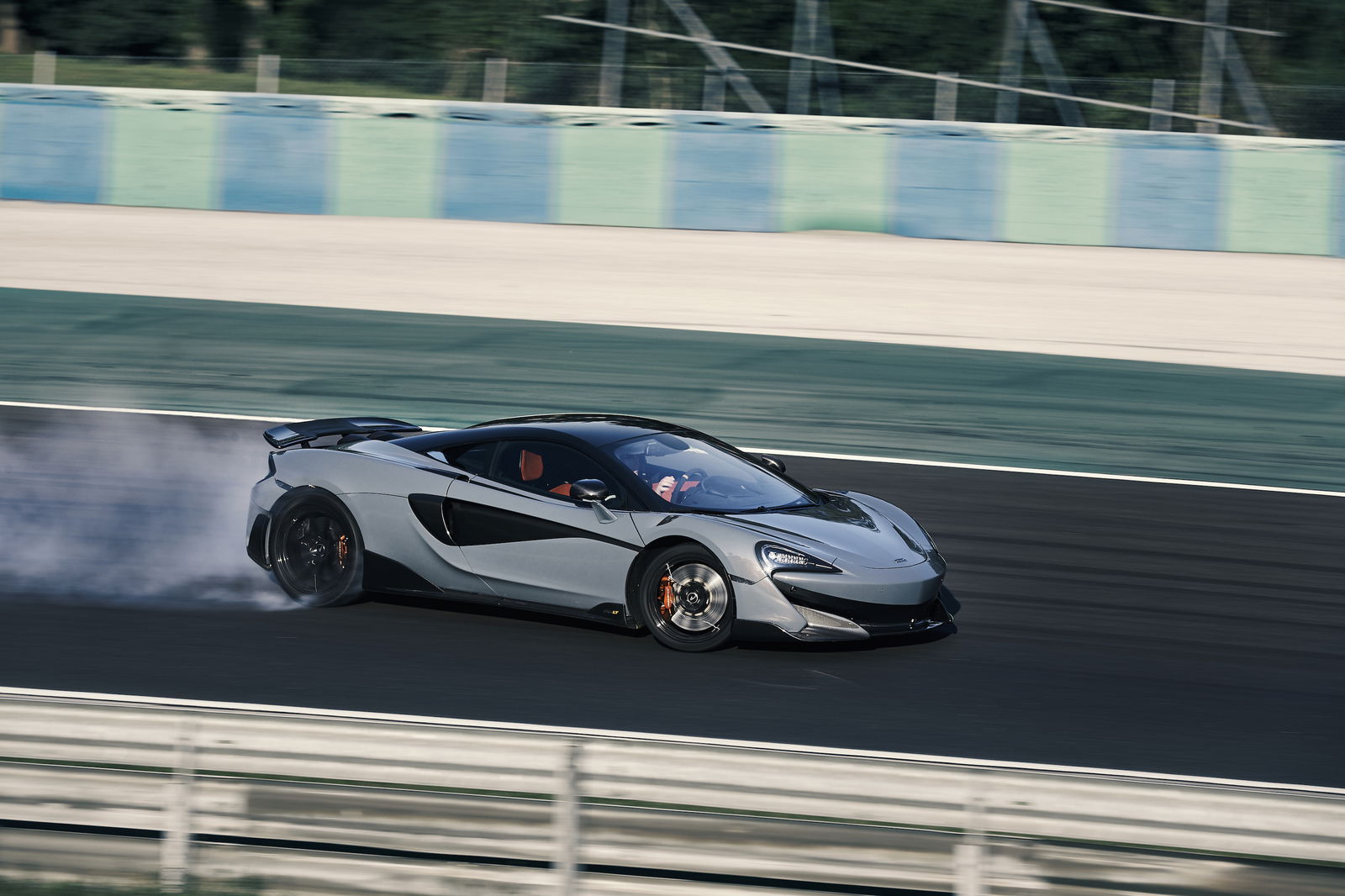

Comments
This and the 458/488 spiders are the only spiders that I actually like
Top exit exhaust + drop top: heaven